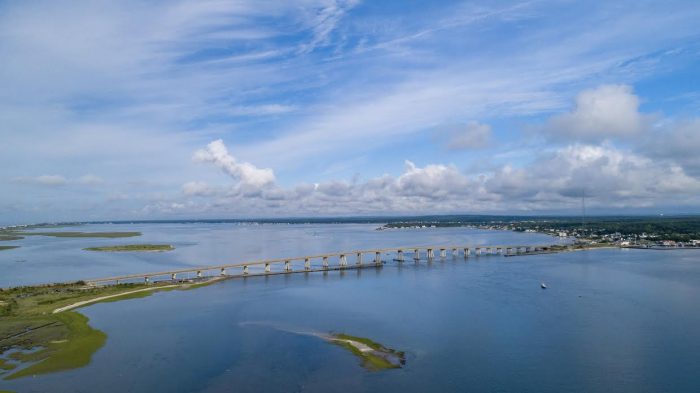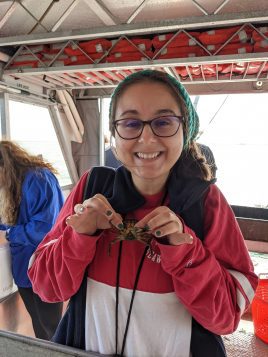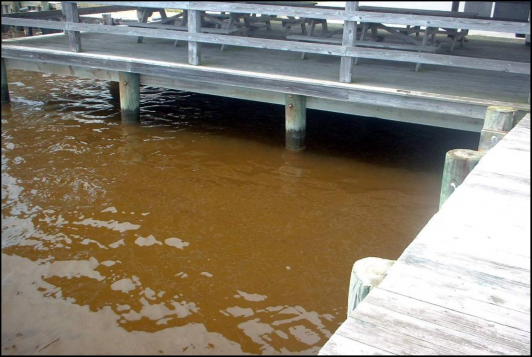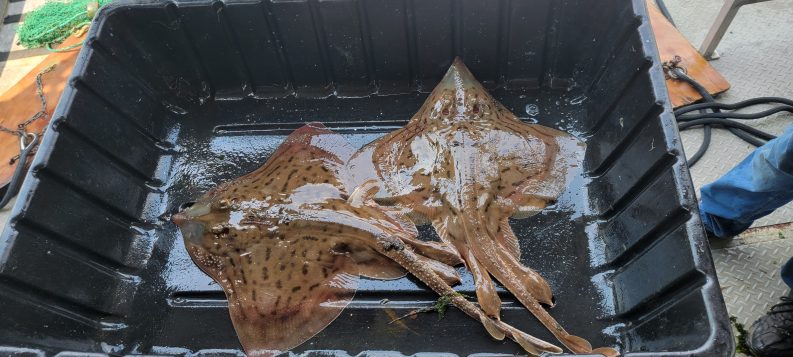By Daniel Dunaief
The Galapagos Islands, the Great Barrier Reef, Little Cayman and … Shinnecock Bay? Yes, that’s correct, the 40 square kilometer bay located on the southern end of Long Island recently joined a distinguished list of celebrated marine locations identified by Mission Blue, a non-profit international organization led by famed marine biologist Sylvia Earle.
Mission Blue named Shinnecock Bay a Hope Spot, one of 132 such locations in the world that it considers critical to the health of the ocean.
Shinnecock Bay has the distinction of being the only Hope Spot in New York State, the only one near a major city and one of three on the Eastern Seaboard.
“The idea that you could have a Hope Spot so close to a major metropolitan area is pretty significant,” said Ellen Pikitch, Endowed Professor of Ocean Conservation Science at Stony Brook University and the School of Marine and Atmospheric Sciences and Director of the Institute for Ocean Conservation Science.
The designation by Mission Blue not only puts Shinnecock Bay in elite environmental company, but it also completes a comeback story driven by scientists, their students, numerous volunteers, and other supportive groups.
“The point of Mission Blue designating this place a Hope Spot isn’t only to bring more people and attention to Shinnecock Bay,” said Pikitch, but is also to “send the message of hope that we can turn things around.”
Pikitch, Christopher Gobler, Endowed Chair of Coastal Ecology and Conservation at the School of Marine and Atmospheric Sciences, and Bradley Peterson, Associate Professor at Somas, led the efforts at the bay.
The scientists created clam sanctuaries in the Western Shinnecock Bay with strict no take rules for people, which helped jump start the restoration. The clams helped meet natural filtration goals.
The researchers also helped restore eelgrass, also called seagrass, which is a more effective natural way to sequester carbon per square inch than the rainforest.
Between 1930 and the start of the project in 2012, New York State had lost about 90 percent of its eelgrass. A task force projected that eelgrass would be extinct in the Empire State by 2030. The bay now has about 100 more acres of eelgrass than it had in 2012.
These efforts have created a “huge leap in the number of forage fish” including bay anchovies and menhaden, said Pikitch, who studies forage fish. “The bay is in a much healthier place now that it was when we started,” she added.
Tough beginnings
Indeed, in 2012, parts or all of the bay had to close because of brown or red tides. The tides sometimes “looked like coffee spilled across the entire bay,” Pikitch said.
The steps the researchers took to improve water quality took some time. “Harmful algal blooms didn’t disappear right away,” Pikitch said. “As the study progressed, the amount of time brown tides occurred got shorter and shorter. Ultimately we stopped seeing brown tides several years ago.”
Red tides, which can cause paralytic shellfish poisoning that could be fatal to people, had also been a problem in Shinnecock Bay. Nearly half the bay was closed to shellfishing in 2011, 2014, and 2015. In 2017 and 2028, about 1/4 of the bay was closed due to red tides. Since 2019, however, red tides haven’t threatened the bay.
On the water
Throughout the restoration process, scientists in training and volunteers contributed to various efforts. Konstantine Rountos, Associate Professor of Biology at St. Joseph’s University in New York, earned his Master’s and PhD and conducted his post doctoral research at Stony Brook University. He also served as the lead research scientist for the Shinnecock Bay Restoration Program trawl survey from 2012 to 2016.
Rountos called the designation “remarkable and extremely exciting.” When he started working on the bay in 2005 as a Master’s candidate, he saw stressors such as eelgrass declines.
“Not only was the ecosystem showing signs of collapse (decreased seagrass, decreased hard clams, increased harmful algal blooms), but the Bay was supporting fewer and fewer baymen,” he said. The Long Island “cultural identity of ‘living off the bay’ was in serious danger.”
Rountos believes people often overlook the significant ecological importance of this area, driving past these environmental and ecological treasures without appreciating their importance.
Amid his many Bay memories, he recalls catching a seven-foot long roughtail stingray. “It was very surprising to pull that up by hand in our trawl net,” he said.
A veteran of the bay since 2016, Maria Grima spent time on Shinnecok as an undergraduate at Stony Brook and more recently for her Master’s training, which she hopes to complete this August.
Grima has been studying the invasive European green crab that shreds eelgrass and consumes shellfish such as clams, oysters and mussels. In a preliminary analysis, the population of this crab has declined. Grima noted that it’s difficult to prove cause and effect for the reduction in the number of these crabs.
Rather than pursue a potential career in medicine, which was her initial focus when she arrived at Stony Brook, Grima decided to focus on “fixing the environmental issues that cause human health problems.”
She is “really proud that Shinnecock Bay” achieved the Hope Spot designation.
One of her favorite Bay memories involves seeing an ocean sunfish, which is a distinctive and large fish that propels itself through water with its dorsal and ventral fins and is the world’s largest bony fish. Seeing the biodiversity on a bay that has had historically poor water quality “gives you hope when you’re on the boat,” Grima said.
When friends and volunteers have joined her on the Bay, she has delighted in watching them interact with seahorses, which “wrap their little tail around your finger.”
Looking toward the future
While Pikitch is pleased with the designation, she said the work of maintaining it continues.
“We can’t rest on our laurels,” she said. “Continued construction on Long Island’s East End and the growing threat of climate change may require additional restoration work. We need to keep a close eye on what is happening in Shinnecock Bay and be ready to take action if necessary.”
















